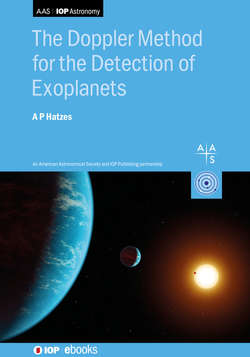Читать книгу The Doppler Method for the Detection of Exoplanets - Professor Artie Hatzes - Страница 32
На сайте Литреса книга снята с продажи.
2.3.5 Readout Noise and Dark Current
ОглавлениеThe readout noise results from the conversion of the electrons in each pixel to a voltage on the on-chip amplifier. The readout is the ultimate noise limit of a CCD. Figure 2.17 shows the S/N that is achieved as a function of the detected photons and readout noise. With no readout noise, this follows photon statistics, with S/N merely the square root of the number of detected photons. However, with nonzero readout noise, this deviates from the ideal expression for low signal levels. For a rather high readout noise of 10 e−1, the performance of the CCD is seriously affected and one can never achieve an S/N below about 3.
Figure 2.17. The signal-to-noise ratio (S/N) as a function of the number of detected photons for different levels of readout noise (0, 1, 3, and 10 e−1). The black line is for the ideal case of photon noise (no readout noise).
When CCDs first came into regular use by astronomers in the 1980–1990s, CCDs with readout noise of 10 e−1 were common. Modern CCDs now have a readout noise of typically 2–3 e−1. Most precision RV measurements are taken at S/N > 10, so the readout noise is never an issue influencing the uncertainty in the RV measurement.
The readout noise of a CCD can easily be measured by taking these steps:
Take a large number (≈10) of bias frames.
Create a master bias by taking the median of the bias frames.
Subtract the master bias from each bias frame.
Take the standard deviation of these images and multiply by the gain because you want the readout noise in electrons and not ADUs. This value is your readout noise.
